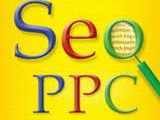Today.Az » SEO & E-Marketing » 6 actionable ways to use PPC and SEO data to improve overall results and focus
08 October 2011 [12:00] - Today.Az

SEO is better! No, PPC is better! Yes, for many years there has been the debate around SEO (search
engine optimization) vs. PPC (pay per click – or paid search) and why
you should focus on one over the other.
But some of the best campaigns don’t pit the two against each
another. The sum of PPC and SEO is stronger than just its parts—and can
activate your brand to reach and engage more consumers. Instead of
fighting, why not discuss how we can use the respective data from both
to improve overall campaign performance? Let’s focus resources on the
areas that will have the biggest impact for both. Interesting … Where Do You Start?
So how do you decide where to focus efforts? One of the easiest ways
to start is to create a dashboard that combines the various data points. Paid metrics could include:
- Paid Impressions
- Paid CTR
- Paid Conversions (whatever you track to measure quality)
Organic metrics could include:
- SEO Sessions
- SEO Conversion % (whatever you track to measure quality)
Search engine data includes:
- Google Volume (Average monthly “Exact Match” from the Adwords Tool)
- Your Current Keyword/Keyword Phrase Rank
- Your Ranking URL
Now that you have your dashboard … here is how you maximize performance.
Use SEO Data to Maximize PPC Performance and Decrease Costs
1. Refine Match Types
Use your SEO data and match by keyword to your paid search data.
Identify which paid search keywords are on “Broad Match” (typically more
expensive) and review SEO performance (from your dashboard). Based on
the SEO performance, identify areas where you could refine the match
type to phrase or exact without hurting campaign goals. By refining
match types you can bring the media cost down and potentially invest
back into the campaign.
2. Uncover New Keywords
Comparing the list of referring keywords from organic search to what
you are currently managing in paid search, you can uncover new keywords
that are performing well in organic search that you are currently not
using in your PPC campaign. The same is true for site search where you
can uncover new terms to target in your paid search efforts based on
what people are telling you they “want” while searching on your site.
3. Limit Cannibalization
Clients and companies sometimes debate the value of running a paid
search campaign that includes keywords where they already rank well for
organic search.
Use PPC Data to Prioritize Keywords for SEO
4. Content Gap Analysis
Use PPC data, sorting by top KPI performers, matched by keyword
against your targeted SEO keywords (e.g. match “baby formula powder”
performance data from your PPC campaign to “baby formula powder” from
organic search). This will help you focus resources on keyword/keyword
phrases that either rank poorly in organic search or don’t rank at all
so that you can optimize existing content or develop new content.
Remember: this is based off revenue numbers to help evaluate the
opportunity rather than just traffic estimates.
5. Estimate Demand for Keyword Targets
Search-volume-estimate tools are good, but they are not always
accurate. Using your paid search data combined with your SOV (share of
voice) you can get an idea for the potential traffic of a top ranking
based on impression level data.
6. Identify Top Converting Paid Keywords with Low/No SEO Visibility
This is an excellent way to focus resources on potential content
development or keyword targets to optimize based on visibility tied to
performance data from your paid search campaign.
NOTE: Ask yourself “what does the competitive landscape look like?”
- This is important because even if your paid search performance is
strong, the space may be too competitive for you to impact soon, if
ever. If you want to be on Page 1, that means someone has to be knocked
off. You need to evaluate how much effort that will take.
Use your top paid search keywords, sorted by important KPIs and
traffic volume. Then create a chart that lays out the target keyword
phrases based on high/low competition and revenue opportunities. Using the paid search data to get to this place gives you the advantage beyond using a keyword research tool because you have the actual revenue numbers associated with the keyword phrases – not just traffic.
It is always good to tackle the “low-hanging fruit.”Creating or
optimizing content that has low competition with high revenue potential
is a smart start to your SEO efforts. Conclusion
The reality is that SEO and PPC truly compliment each other. A
combined strategy will reach more consumers, and make your brand a
bigger part of the search conversation. SEO and PPC shouldn’t fight each
other, so lay out a plan and a report to analyze the data. Let’s
celebrate our strengths to increase overall impact.
/Search Engine Journal/
|